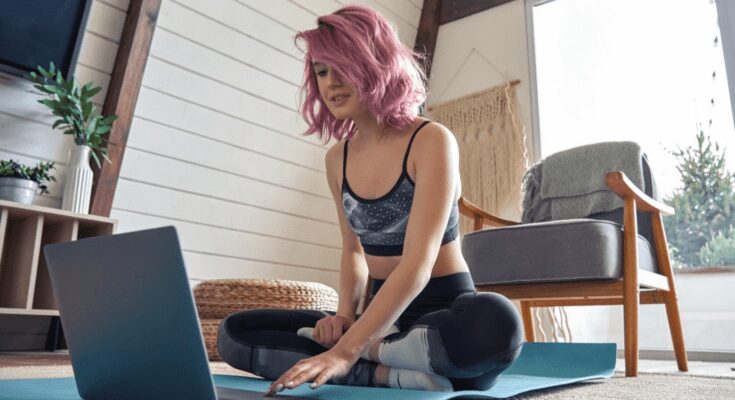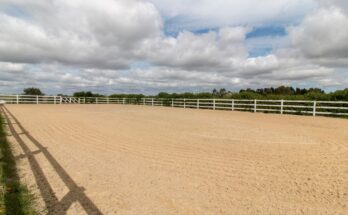Do you want to know how to calculate your current fitness level?
Whether you are a beginner at working out or you want to join an athletic team, it is important to know how to measure your fitness ability. By knowing your limits, you can know what exercises to stay away from and which ones you can perform without risking injury.
You may be wondering how to calculate your current fitness level. Exercise is a journey, and you’ll learn more about yourself during this time.
Ready to start exercising? Here’s how to discover your fitness level!
Do a Fitness Test
The best way to do this is to choose a fitness test specifically designed to target the areas of fitness you wish to improve upon. For example, if your primary goal is to increase your cardiovascular endurance, try a running, swimming, or cycling test. Once you’ve selected your chosen fitness test, set a specific benchmark for yourself.
For example, if you are doing the running test, measure how long it takes you to cover a mile and record this number. After completing the test as many times as necessary, compare your average performance to your benchmark or other runners in your age range. You can also consider doing this test in the fitness center located here for a more accurate calculation of your fitness level.
Take Your Resting Heart Rate
Calculating your current fitness level starts with determining your resting heart rate. To get an accurate reading, you will need to take your pulse several times per day, right after you wake up in the morning and again before going to sleep. To do this, find a spot on your wrist, either the inside of your wrist below your thumb or your neck, just to the side of your windpipe.
Count the number of beats you feel in 10 seconds and multiply by 6 to get your rate per minute. If your rate is lower than 60 beats per minute, it means you are very fit. If your rate is higher than 80 beats per minute, it means your fitness level is below average.
Evaluate Your Body Fat Percentage
To determine your body fat, you can use a variety of methods, such as a DEXA scan, skinfold calipers, underwater body fat measurements, or even simple BMI measurements. When calculating body fat percentage, you should take into account factors such as fitness level, gender, and age.
Once you’ve determined your body fat percentage, you can take it a step further and calculate your lean body mass index. To do this, divide your lean body mass (the weight of your body minus fat) by your height. This will give you a good indication of your current fitness level.
Measuring Your Maximum Oxygen Uptake (VO2 Max)
One way to calculate your current fitness level is to measure your maximum oxygen uptake, also known as your VO2 max. This measure is an indicator of aerobic fitness and is determined by taking a physical test while wearing equipment that analyzes your oxygen intake.
During this test, you will probably be asked to run on a treadmill or ride a stationary bicycle while the testing equipment measures oxygen, carbon dioxide, and other air volume changes as you exercise. You can calculate your VO2 max by determining the maximum amount of oxygen you use as you push yourself to the limit during the test. Knowing your VO2 max can help you understand your current level of aerobic fitness and track any improvements.
Measure Your Strength
Calculating your strength is an important component of determining your current fitness level. Start to find the amount of weight you’re comfortable with for several types of exercises, such as the bench press, bent-over row, shoulder press, back squats, and front squats. To increase the challenge, you can add weights in increments of 5–10 pounds per session.
To track your strength, note the weight and reps you can do for these exercises and observe if you see an increase over time. This can tell you how much progress you’re making. To further measure your strength, you can also perform tests such as a 1RM max or a specific number of reps for a certain exercise.
Calculate Your Flexibility
To measure your flexibility, begin by warming up your muscles. Doing light stretching is important for measuring your flexibility. Sit down and stretch your legs out as far as you can to measure your leg flexibility.
Lie on the ground and reach your arms as far up your back as possible to measure your shoulder and arm flexibility. Stand up and bend your torso over your legs to see how far you can reach your toes.
Make sure to extend your arms down and keep your chest close to your legs to measure your back flexibility. Whatever measurements you get can be used as a benchmark for your current fitness level.
Assess Your Balance
You can access your balance by standing on one leg with your eyes closed for 10 to 20 seconds. If you can stand on one leg without wobbling, then your balance is on par.
If you struggle to stay balanced, then you can start with smaller increments, such as standing on one leg with your eyes open for one minute. Additionally, a balance board is an excellent tool for measuring balance, as it continues to challenge you as you improve.
Take Your Aerobic Capacity Test
The aerobic capacity test can help you determine how much oxygen your body can process compared to its maximum rate. The test involves taking a brisk stroll, a steady walk, and a vigorous jog on a flat track or treadmill. The heart rate, breathing rate, and how long it takes to complete each section are then measured and used to determine your fitness level.
Use This Guide to Calculate Your Current Fitness Level Today
Knowing your fitness level is important for maintaining a healthy lifestyle. By doing a fitness test, taking your resting heartbeat, and using the calculation of BMI and VO2 max, you can get a good picture of your current fitness level. Also, don’t forget to measure your strength, flexibility, and balance, and take your aerobic capacity test.
Always assess your fitness level to continue to improve and reach your goals!
Looking for a way to stay fit all year? Be sure to check out our other blog posts for more great content about physical fitness.



